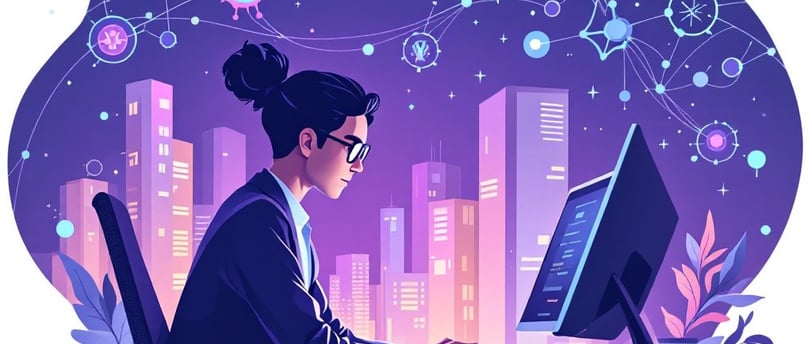For years, the SaaS industry segmented its market into three categories:
To B (Business): Selling to companies with teams, hierarchies, and formal processes.
To P (Professional Individuals): Targeting skilled experts (e.g., designers, consultants) who use tools for work.
To C (Consumer): Serving individuals for personal needs (e.g., fitness apps, entertainment).
While AI isn’t disrupting the To C space—people still stream music or track workouts as individuals—it’s radically redefining the relationship between To B and To P. In fact, the two are converging so fast that the question for SaaS might no longer be “Are we selling to businesses or professionals?” but rather “Is there even a difference anymore?”
When the Professional Is the Business
Traditionally, “To B” meant selling to organizations with departments, budgets, and managers. “To P” focused on empowering individuals within those organizations. But AI is turning this dynamic on its head. Today, a professional individual armed with AI tools can operate with the efficiency of a full team—effectively becoming a business themselves.
Examples are everywhere:
A marketer using ChatGPT and Canva AI to run a solo agency.
A programmer deploying AI code assistants to build apps without a dev team.
A financial advisor leveraging AI analytics to serve clients like a boutique firm.
These aren’t just “freelancers.” They’re AI-augmented solo enterprises—entities that deliver business-grade outcomes without traditional business infrastructure.
The Blurring Lines: Why To B vs. To P Is Obsolete
When a SaaS product serves a solo lawyer using AI to draft contracts, is it a “To B” tool (because it’s used for legal business) or a “To P” tool (because the user is an individual)? The distinction collapses. Here’s why:
AI Erases Scale Boundaries
A solo operator with AI can handle tasks that once required 10 people. Tools like Jasper (content generation) or Durable (AI-built websites) let individuals compete with agencies.The “Business” Is Just a Person
Platforms like Stripe and Shopify allow AI-empowered individuals to manage payments, compliance, and customer support independently. The “business” is just a professional + their AI stack.Buyer Identity Is Hybrid
A consultant buying project management software isn’t purchasing it for a “company”—they’re buying it for themselves as the company.
What This Means for SaaS Strategies
To win in this blurred landscape, SaaS companies must:
Design for Atomic Units: Build features that serve individuals as businesses, not teams. Think: AI-driven automation, not user permissions.
Pricing for Solo Scalability: Offer plans that grow with outcomes (e.g., revenue-based tiers) rather than headcount.
Verticalize for Roles, Not Industries: A solo content creator needs AI tools tailored to their workflow, not generic “small business” solutions.
To C Stays Separate, To B and To P Merge
Critically, To C remains untouched by this shift. Consumers still buy apps for personal life, not work. But for SaaS targeting professionals and businesses, the old categories no longer hold. When a “business” can be one person with AI, the real opportunity lies in empowering the individual-as-enterprise—a fusion of To B and To P.
The future belongs to SaaS platforms that ask not “Are you a business or a professional?” but “What can you achieve with AI as your teammate?”


